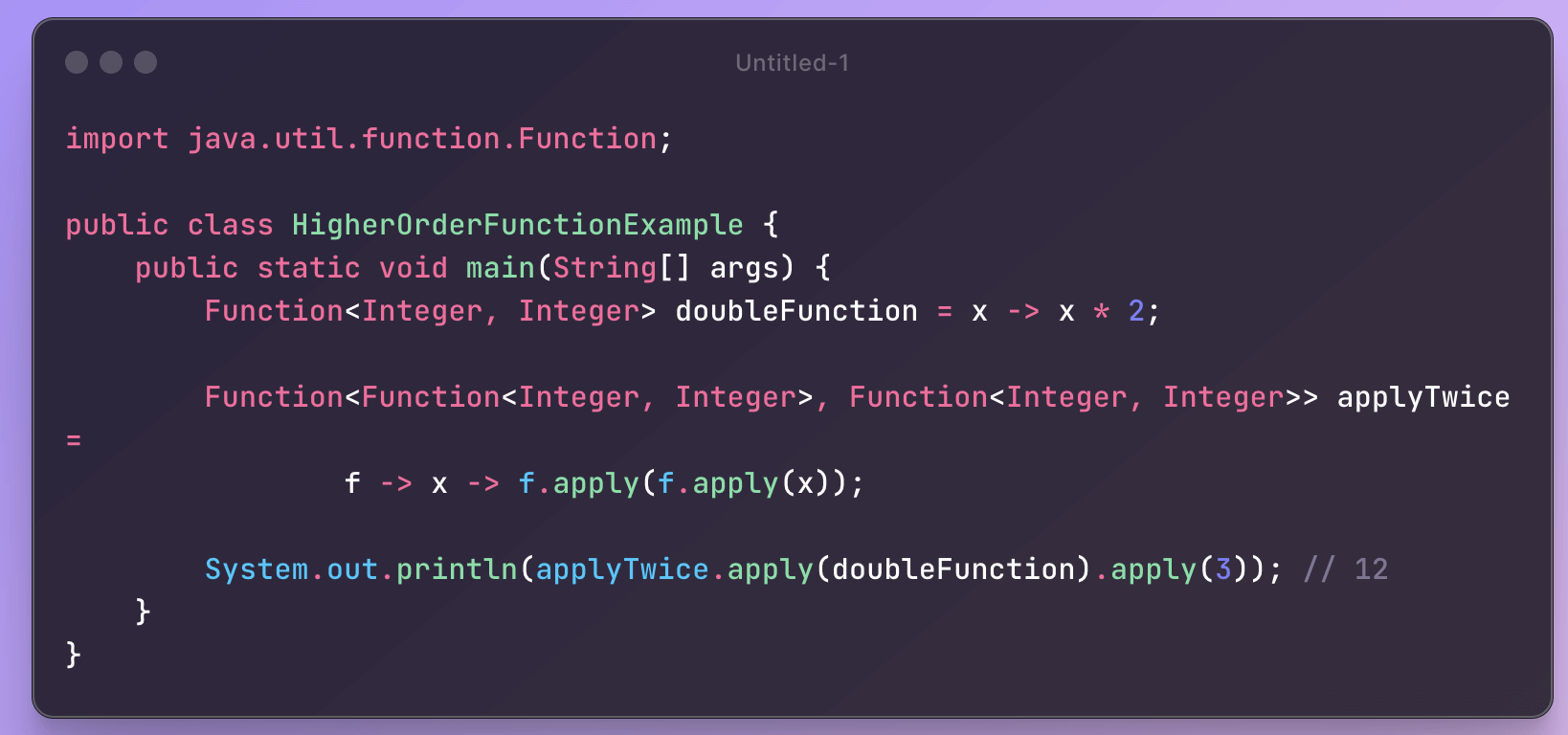用 Java 来实现高阶函数

目录
如何用 Java 使用高阶函数
Funciton 接口的定义
/**
* Represents a function that accepts one argument and produces a result.
*
* <p>This is a <a href="package-summary.html">functional interface</a>
* whose functional method is {@link #apply(Object)}.
*
* @param <T> the type of the input to the function
* @param <R> the type of the result of the function
*
* @since 1.8
*/
@FunctionalInterface
public interface Function<T, R> {}代码示例
实现功能:
- 2 次函数 apply
- 3 次函数 apply
public static void main(String[] args) {
Function<Function<Integer, Integer>, Function<Integer, Integer>> applyTwice =
//f(f(x))
f -> x -> f.apply(f.apply(x));
Function<Function<Integer, Integer>, Function<Integer, Integer>> applyThrice =
f -> {
return x -> {
//f(f(f(x)))
return f.apply(f.apply(f.apply(x)));
};
};
System.out.println(applyThrice.apply( x -> x + 1 ).apply(0));
}第一层:最外层 Function
Function<Function<Integer, Integer>, Function<Integer, Integer>>这个类型的输入是 Function<Integer, Integer>
输出也是 Function<Integer, Integer>。
换句话说,这个高阶函数的作用是:
- 接收一个函数
Funciotn<Interger, Integer> - 返回一个新的函数
Function<Integer, Integer>,
第二层:输入参数
Function<Integer, Integer>
这是 Java 函数接口, 输入输出参数都是 Integer
比如:
Function<Integer, Integer> increment = x -> x + 1;
Function<Integer, Integer> square = x -> x * x;
这些都是 Function<Integer, Integer> 类型的函数。
第三层 返回值 Function<Integer, Integer>
最后 applyThrice 应该返回的是一个Function<Integer, Integer>
拆解下 applyThrice.apply( x -> x + 1 ).apply(0)
applyThrice.apply( x -> x + 1 )返回了:x -> ( ( ( x + 1 ) + 1 ) + 1 )applyThrice.apply( x -> x + 1 ).apply(0)就是把 0 作为输入 x( ( ( 0 + 1 ) + 1 ) + 1 )结果为 3